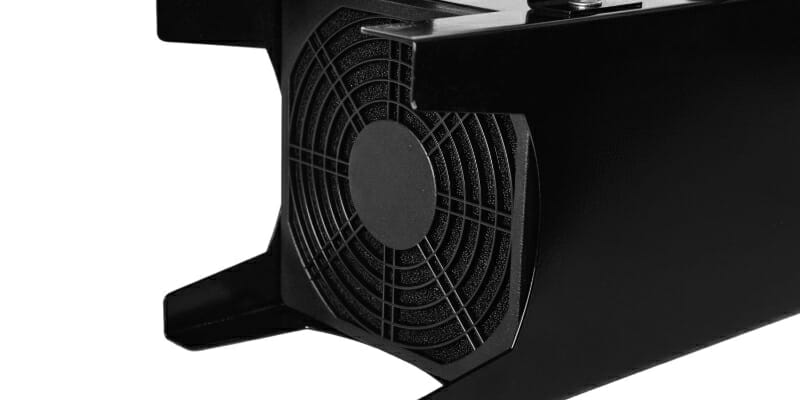- Home
- About us
- Products
- Dealer Enquiry
- Blog
- Contact Us
- Home
- About us
- Products
- Dealer Enquiry
- Contact Us
- 044 -2486 1994
- +91 99623 98222
- sales@nantech.in
- REQUEST A QUOTE

Facing a power quality issue? Get yourself an Active Harmonic Filter and reduce harmonic pollution during electrical installation. Using an active harmonic filter ensures that the current is "clean". An active harmonic filter requires a stable external power source to inject phase opposite current harmonics to downstream loads. Depending on the stability of the connected external power source, its efficiency will vary.
In this blog, we analyze the pros and cons of harmonics. But first, let's see what leads to harmonics in the power system.
Technically speaking, when the current waveform deviates from the sinewave shape, it is said to contain "harmonics." Is that a good or bad sign? Apparently, harmonics is a bad sign because harmonic frequencies in the power grid cause power quality issues. Why do harmonics occur? Leading inverter battery manufacturers and suppliers from Nantech Power Systems Pvt Ltd, Chennai, point out two things:
Blame 1: Non-linear loads
Power distribution circuits use non-linear devices that create non-linear currents and cause voltage distortions. Some common examples are:
"Harmonic current" is a term commonly used to describe these non-linear currents and voltages. A high load on the power distribution network leads to harmonic currents, which are multiples of the fundamental frequencies.
Blame 2: Electronic switching devices
The excessive use of electronic switching devices in modern equipment has significantly increased the harmonic pollution in the electrical distribution system. Some of the common examples are:
To rectify these power issues, we need one main aspect: Harmonic filters to harmonics coming from the power distribution network. These filters use "frequency conversion technology" to control harmonics and improve power quality in two ways:
With the availability of passive filters, why do experts lean towards active harmonic filters to rectify harmonics in power generation? The reasons are obvious. These filters come equipped with an additional amplifier that changes their action and improves stability. An active filter also:
However, these above-mentioned factors are just the tip of the iceberg. In our next section, we have explained more remarkable advantages in great detail.
Also Read: Why Choose Active Harmonic Filters Over Passive Harmonic Filters?
1. Prevent equipment failure and breakdowns.
When many small harmonic-producing devices are collectively causing large amounts of harmonic pollution, filtering the main power supply is a very useful solution. Active harmonic filters effectively prevent failures and breakdowns of devices since they help correct non-linear loads. The filters also provide energy efficiency, which helps extend the durability of the device.
2. Help in maximum use of installed capacity.
An ideal example of active harmonic filters maximizing installation capacity is their use in the AC lines parallel to the loads that produce offending harmonics. The active harmonic filters inject inverted current into the AC lines and cancel harmonics, improving electrical stability.
3. Improve energy efficiency.
One of the best aspects of active harmonic filters is that they are scalable and sized to the harmonic current for multiple loads. You can also install additional units if the total harmonic current exceeds the rating of the single harmonic filter. They also decrease the emission of carbon dioxide.
4. Reliable and provide continuity.
Active Harmonic Filters are handy for areas with significant non-linear loads and many DC drives because they reduce production disruptions. Therefore, these filters also extend the device's life, enabling them to perform consistently well.
5. Curb service and maintenance costs.
Any electrical device that operates at maximum efficiency is bound to work without issues. This theory is applicable for devices with active harmonic filters. Unless the capacitors and resistors are required, the active harmonic filter does not require custom fabrication because it is largely impedance-independent. According to the manufacturers, active harmonic filters can handle wideband harmonic frequencies to minimize service costs.
6. Prevent and reduce energy loss.
Harmonic pollution is synonymous with energy loss because it affects electrical installations' reliability, safety, and efficiency. An active harmonic filter installed on the main power supply can counteract all harmonic currents before reaching the transformer. They also reduce the absorption of reactive power and reduce wear and tear, thereby preventing energy loss.
7. Reduce fire risks.
Harmonic frequencies can increase heating in equipment and conductors. However, with active harmonic filters, you can:
Active harmonic filters are a sure-fire way to reduce fire risks due to overheating.
If you decide to use active harmonic filters, you should also know their shortcomings. Experts say these filters:
The Takeaway
The demand for active harmonic filters is at an all-time high, thanks to the widespread proliferation of non-linear loads. They have become almost indispensable for large power installations, with electric arc furnaces, induction equipment, and electric furnaces. Yes, the active harmonic filter is here to stay!
Want to know more about the active harmonic filter? Visit our webpage right now, or give us a call to know how you can use it to your advantage.
Why Choose Active Harmonic Filters Over Passive Harmonic Filters?
What Are Active Harmonic Filters And Its Application?
Modular UPS Versus Conventional UPS: Differences Decoded
Uncovering the Game-Changing Benefits of Modular UPS Systems
Maximising Inverter Battery Performance: Key Factors to Consider